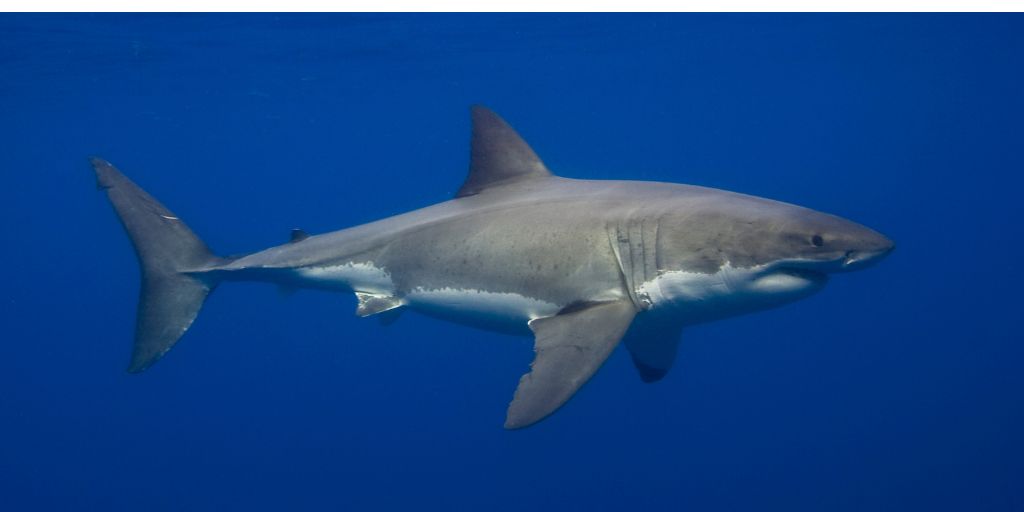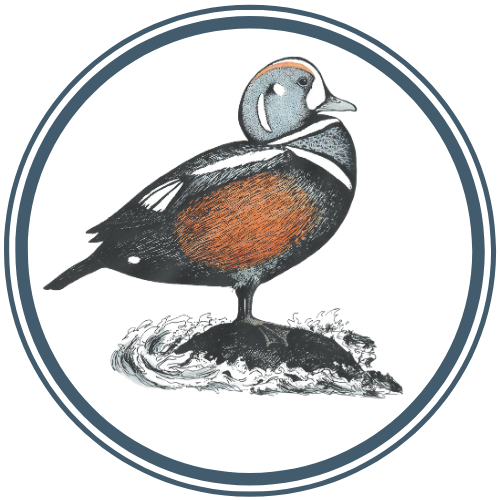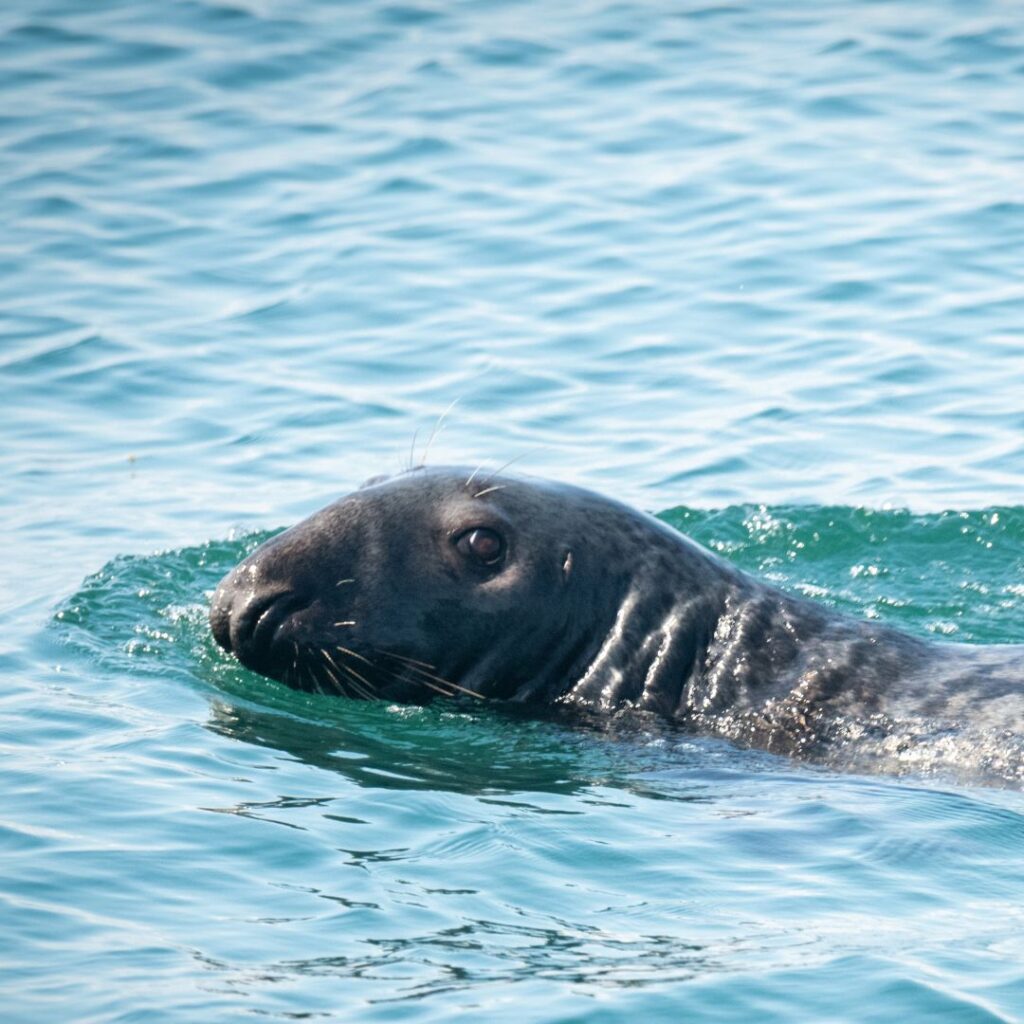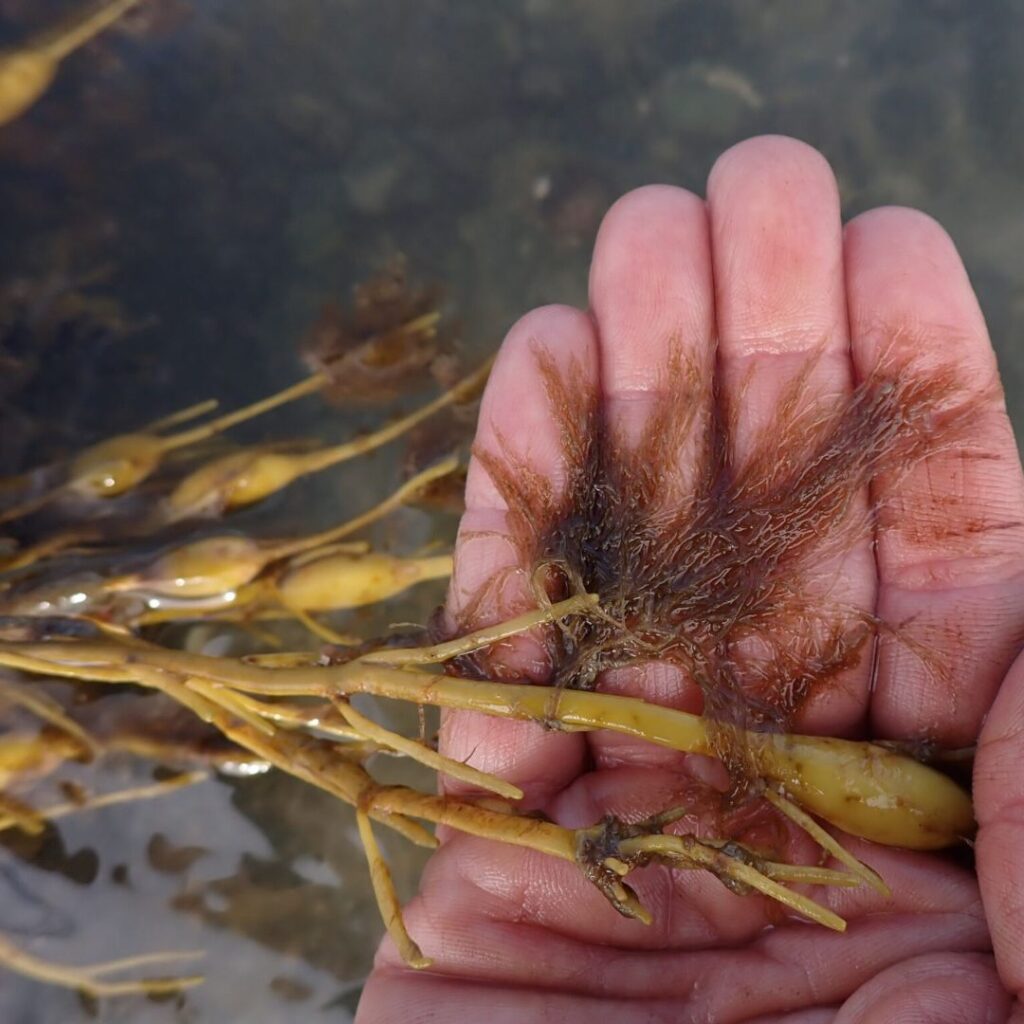Nature Notes: A Maine Naturalist Afield

Host: Logan Parker
Producer: Glen Mittelhauser
Logan Parker explores the evolving presence of sharks in the Gulf of Maine, from childhood memories of touch-tank dogfish to the modern realities of Great White Sharks along Maine’s coast. This episode examines shifting shark populations, seal recovery, and how modern tracking research is reshaping our understanding of these apex predators.
Transcript
I can still remember the anticipation I felt as a young child while traveling to the Maine State Aquarium for the first time. Having already seen Spielberg’s “Jaws” by the time I reached kindergarten, I was completely fascinated by sharks. After consuming dozens of books and t.v. specials on the topic, I couldn’t wait to see some in person.
I was admittedly underwhelmed when those sharks presented were so unlike the hulking monster that stalked Amity Beach or the more realistically sized 12’ sharks depicted in my library books. These sharks were a mere 2-3’ long and comfortably fit inside a small, circular touch-tank. The disappointment faded once I had the chance to feel their coarse skin as they circled within the tank. I suspect I was also subconsciously comforted believing that these Spiny Dogfish were more representative of the sharks likely to be encountered within the Gulf of Maine. I spent the rest of my childhood operating under this assumption, having been told many times by the adults in my life that any potential Great Whites were far, far away from any of our local beaches.
As my passions for natural history became more formalized as a young adult, I found myself reexamining the life histories of the sharks that had fascinated me as a child. I was particularly intrigued by recent studies of shark movement within the gulf using acoustic telemetry. The results of these studies, conducted over the last decade, have shown that Great White Sharks do regularly occur within the Gulf of Maine today. 92% of detections from 107 tagged individuals were of sharks within shallow waters (Davis et al. 2025). Detections peaked along the Maine coast from July to September and sharks did occasionally enter waters near Maine beaches.
In July 2020, Maine experienced its first documented fatal shark encounter off Bailey Island. Growing up in the state, such a rare and tragic encounter was unthinkable. Yet, while the occurrence of Great Whites does appear to be increasing, the species does have a long history of occurrence with the Gulf.
Potential increases of sharks in the Gulf have been attributed, at least in part, to increasing numbers of both Harbor and Gray Seals which serve as potential prey within the region (Davis et al. 2020). Once hunted to near extirpation along the Maine coast, seal populations have greatly recovered following the implementation of the Marine Mammal Protection Act of 1972 (Wood et al. 2022). Notably, there are just 20 records of Great Whites recorded along the Maine coast in the 19th and 20th centuries, a period during which nearly 25,000 bounties were paid for culled seals (Lelli et al. 2009).
In 1998, a paper titled “The White Shark in Maine and Canadian Atlantic Waters” was published in the Northeastern Naturalist which compiled the records of species’ occurrence and suggested that Great Whites were annual visitors to the Gulf. One such notable record came from Harry Goodridge– trainer of the famous “Andre the Seal” who in 1960 harpooned a Great White in Penobscot Bay after the shark attacked and killed a seal he was training. Mr. Goodridge reported encountering many such sharks around 1960 in an area of coastline nicknamed “Shark Alley” (Mollomo 1998). Many Maine’s shark sightings prior to the 21st century came from this area, a fact many attribute the operation of a chicken processing plant on Belfast Bay, the offal from which was reportedly dumped into the sea (Mollomo 1998). Reports of the sharks within the region ceased with the closure of the plant in the mid-1960s and reports along the coast became increasingly rare with decades passing between records until mounting interests and technological advances lead to the initiation of the telemetry research efforts described earlier.
The notion that large sharks occur in our coastal waters might be troubling to some. While some level of trepidation is understandable, it is important to remember that unprovoked shark attacks are incredibly rare events, particularly in the Northeast. Since 1837, there have been only 11 such events documented in New England. It is also important to remind ourselves that sharks, from the diminutive Spiny Dogfish to the mighty Great White Shark, play important roles within marine environments, serving as indicators of healthy ecosystem function, aiding in the cycling of nutrients, and acting as regulators of other forms of marine life. Misplaced fears related to misconceptions have resulted in their historic persecution, to the detriment of both the species and the ecosystems they inhabit. We should instead channel the emotions these animals stir into support for research that will help us understand the role sharks play in our coastal waters.
—–
Citations:
Lelli, B., D.E. Harris, and A. Aboueissa. 2009. “Seal Bounties in Maine and Massachusetts, 1888 to 1962,” Northeastern Naturalist 16(2), 239-254. https://doi.org/10.1656/045.016.0206
Mollomo, P. (1998). The White Shark in Maine and Canadian Atlantic Waters. Northeastern Naturalist, 5(3), 207–214. https://doi.org/10.2307/3858620
Wood S.A., E. Josephson, K. Precoda, and K.T. Murray. 2022. Gray seal (Halichoerus grypus) pupping trends and 2021 population estimates in U.S. waters. US Dept Commer Northeast Fish Sci Cent Ref Doc. 22-14; 16 p.
Related Episodes
-

21/21/25: A Conversation with Seabird Researchers, 2025
This episode features a discussion with Coco and Tracey Faber, Alison Ballard, and Peyton Caylor, seabird researchers who worked…
-

6/29/25: A Discussion with Megan McOsker, part 5
Glen talks with Megan about the changes that she has seen in the ecology of the Gulf of Maine…
-

12/22/24: Maine Seaweeds, Part 1
This episode is part 1 of an interview with Amanda Savoie and Jordan Chalfant who are field biologists working…



